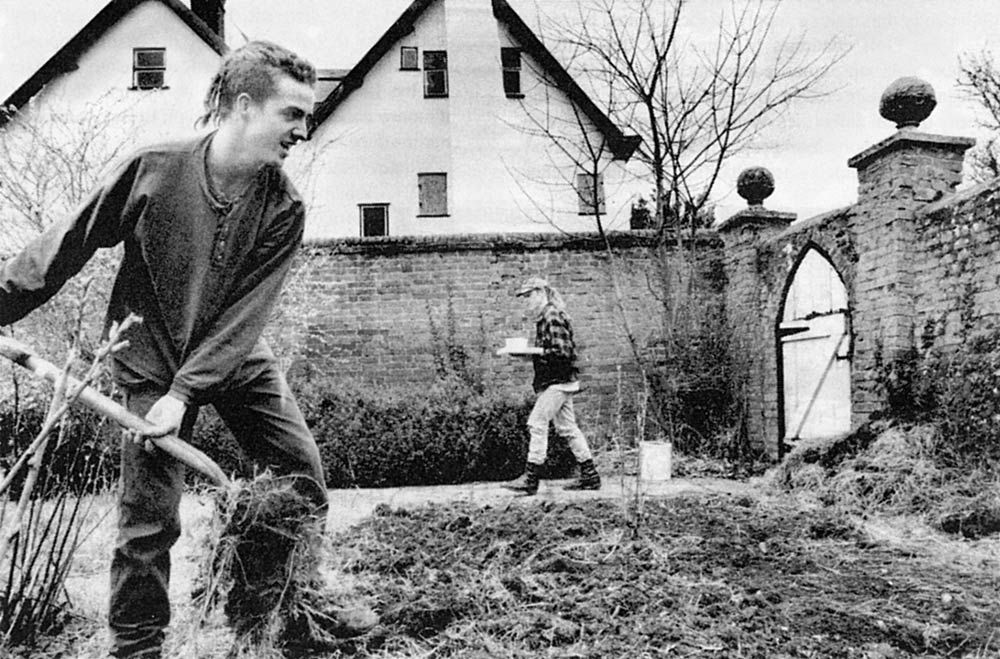
News Of The Skews
Squall 10, Summer 1995, pg. 13.
“It’s a victory for common sense. The building was deteriorating badly. The squatters are delightful people who have become part of the community. They have mended the roof and repaired the windows. Just by being there, they have put off vandals and thieves.”
Even if you had ten guesses which newspaper ran this quote you wouldn’t get it.
This issue’s News of the Skews goes on the positive because the above quote was found not in one newspaper but in three, all on the same day.
And what’s more, the three newspapers that ran it have been the most viciously anti-squatter news manufacturers over recent years. We’re talking The Times, The Daily Telegraph and most unbelievably of all... The Daily Mail.
The articles, all appearing on Saturday May 20th, were almost identical, commanding 10 column inches plus photograph in the Telegraph, ten column inches plus large headline in The Times and no less than half a page with photograph in The Daily Mail.
“Squatters at The Grange win over villagers and building society,” trumpeted The Telegraph and “Village hails ‘victory for common sense’ - Judge allows DIY squatters to stay in 27-room mansion,” heralded The Times. “Eviction plans dropped after homeless mend 16th century property with dole money,” hailed The Daily Mail.
What is going on? Not one anti-squatter sentiment is expressed throughout any of the articles - no reference to the Criminal Justice and Public Order Act - no reference to the ‘hordes of marauding locusts’ and ‘anti-social parasites’ descriptions that these newspapers have used to define squatters in the past.
Instead, we have: “Squatters are being allowed to stay in a £250,000 country mansion - because they have improved it,” as the first line of The Daily Mail’s version of the story. And in The Telegraph: “John Halliday, chairman of Pulham St Mary Parish Council until the recent elections said: “‘Everyone was very concerned about the way The Grange was deteriorating. It had been empty for four years and was becoming dilapidated. The squatters came along to a Parish Council meeting and explained what they were doing. They seemed an amiable bunch - they invited us to have a look round and asked people to call in for a cup of coffee. I took up the invitation with several other villagers and I was impressed by what I saw’.”
The Times takes Halliday’s quote even further: “The roof had been mended, the windows repaired and they had started decorating. They have also begun to tidy up the grounds that became overgrown in recent years. They were homeless young people and there was a large empty house. It seemed a pretty good marriage. Before they moved in, thieves started to target the place and fire-places were ripped out but now it is lived in, it is secure.”
The Telegraph pointed out that whilst the Leeds and Holbeck Building Society were seeking a possession order against the squatters: “Villagers raised a petition and protested saying that the squatters were ‘delightful people, who were repairing a previously dilapidated building’.”
The Telegraph, in true Telegraph stylee, also mentioned that the Grade II listed building was “recently the subject of an appeal in the Buildings at Risk section of Period House and Garden”.
So what is going on?
The story is a synchronous one.
Two of the squatters, Matt and Sarah, were hitching one day and were picked up by someone working for BBC Look East. They told him about the disused 16th century grade II listed Grange building near Diss in Norfolk and he replied saying the local BBC might be interested in doing a little story on it. Consequently Look East contacted the squatters at the Grange, arranging for a camera crew to visit the building. The following day it appeared on four Anglia News bulletins on the local BBC station. Soon after this Anglia Press Agency and a local photographic agency called Assignment, sent some journalists to interview the squatters and take pictures of their new manor.
Lo and behold - story sold - Times, Daily Mail and Daily Telegraph.
“The thing was that we did have a lot of local support and we have made good connections with the local community,” says Paul, a squatter on the Grange. “So when the press agency journalist went to talk to the local community, they only found good things to say about us. So there’s nothing bad in any of the articles.”
Previous to this cornucopia of positive national press coverage, the squatters at the Grange had only had a small amount of coverage in the local paper and a short news story in The New Statesman.
This nice, unusual, historical story from the shires turned the media monsters into eulogisers. Cracking.
And one equally nice twist to the story is the part played by Jim Paton, a member of the Advisory Service for Squatters, in ensuring that the national papers had anything to write about at all.
“We wouldn’t have been here if it wasn’t for him,” says Paul. “He came walking across the fields with his compass and map from the local train station and he brought a pie that he had cooked as well. We told him the story of the squat and that the Leeds and Holbeck Building Society were taking us to court and he sorted out all the paperwork. We went up to the court-case in Leeds with all this legal paperwork and struck a deal. He was amazing - we wouldn’t have even shown up in court to put our case if it wasn’t for him.”
Related Articles
News Of The Skews - photo of Hyde Park CJB demo used by mainstream photo-editors skews perspective on a year of protest - Squall 9 - Jan-Feb 1995.
